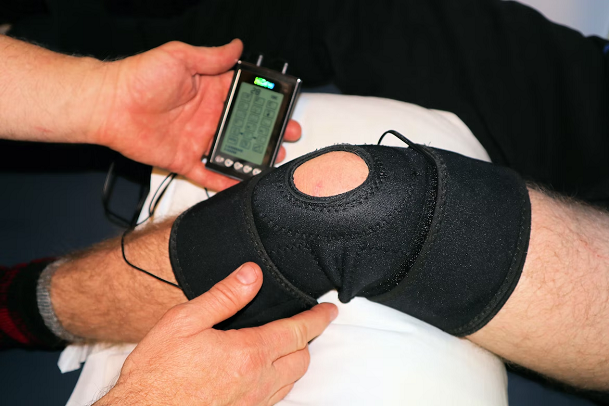Sports-related knee injuries affect millions of people worldwide. Whether you’re a professional athlete or an occasional gym-goer, you know the importance of preventing knee injuries to keep your body healthy and strong. So how can you protect yourself from common knee issues when working out?
In this article, we’ll discuss some tips for avoiding knee injuries while exercising. We’ll look at techniques for proper form and posture, stretches to warm up your muscles, and other strategies to keep your knees healthy during workouts. Read on for more information about how to prevent knee injuries when working out.
1. Always Warm Up and Stretch Before Working Out
When it comes to preventing knee injuries, it is always a good idea to warm up and stretch before exercising. Doing so helps prepare your muscles for higher-intensity movements and can help prevent any sudden jerks in your body as you work out. Try doing dynamic stretching exercises such as high knees and butt kicks to get your body warmed up before going into more strenuous exercises.
2. Train the Leg Muscles Around the Knee Joint
If you want to better protect your knees while exercising, it’s important to focus on strengthening the quads, hamstrings, and calf muscles surrounding the knee joint. This will help reduce the risk of injury by improving stability around the knee joint. Strengthening exercises, such as squats and lunges can help build muscle strength and stability in the legs.
Stretching exercises, such as calf and hamstring stretches, can also help improve flexibility and reduce the risk of strain or injury. When performing any type of lower body workout, it’s important to maintain proper form to avoid placing unnecessary stress on the knees. And, be sure to rest between sets so that your muscles have time to recover before continuing.
3. Consider Knee Arthroscopy
Since knee injuries can be frustrating, you may want to consider arthroscopic surgery as a last resort if all other treatments do not help. Furthermore, knee arthroscopy is a procedure in which a surgeon inserts a small camera inside the knee joint to examine the area and check for any underlying damage. The surgeon then carries out treatment, such as removing loose fragments or repairing a tear. Although the procedure is always done on an outpatient basis, it may still require physical therapy afterward to help strengthen the knee and ensure proper healing.
4. Lift Weights Carefully, Maintaining Proper Form
As important as it is to lift weights to build strength and prevent knee injuries, proper form is key. Make sure you are using the correct technique for each exercise and don’t overload your body with too much weight. Also, be sure to focus on strengthening not just the muscles surrounding your knees but also the muscles in your upper legs and core. Stronger muscles throughout your body will help support the knee joint and reduce the chances of injury.
5. Prioritize Low-Impact Exercises When Possible
One of the best ways to prevent injury when working out is to prioritize low-impact exercises. Low-impact exercises put less stress on your knees and joints, which can help reduce the risk of injury. Examples of low-impact exercises include swimming, cycling, walking, yoga, Pilates, and elliptical machines. By incorporating these into your workouts, you can reduce the risk of knee injuries when exercising.
6. Avoid High-Intensity Interval Training (HIIT)
While HIIT can be a great way to get an effective workout in short bursts of time, it puts additional strain on the knees. High-intensity exercises like burpees or mountain climbers put intense pressure on the knees, so it’s best to stay away from these exercises and opt for lower-impact alternatives instead. For example, switch out burpees for bodyweight squats or mountain climbers for plank walks. This can help reduce the amount of stress placed on your knees and lower the risk of injury.
7. Take Time to Recover Between Workouts
Lastly, make sure to build in rest days and/or light activity days into your workout schedule. As you work out, your muscles need time to recover after a tough session; this is especially true for the knees which are constantly bearing weight when working out. Taking breaks between sessions gives your body the chance to heal and repair, which will help keep them strong and less prone to injury. Additionally, make sure you are getting adequate amounts of sleep each night so your body can be fully recharged and ready for the next workout.
In the end, to protect your knees from injury when working out, it is important to strengthen the muscles around the knee, stretch regularly to increase flexibility, use appropriate footwear, and always follow a proper warm-up and cool-down routine. Plus, it is essential to listen to your body and take frequent breaks if you experience fatigue or pain. With these tips in mind, you can be sure to stay safe while getting the most out of your workouts.
